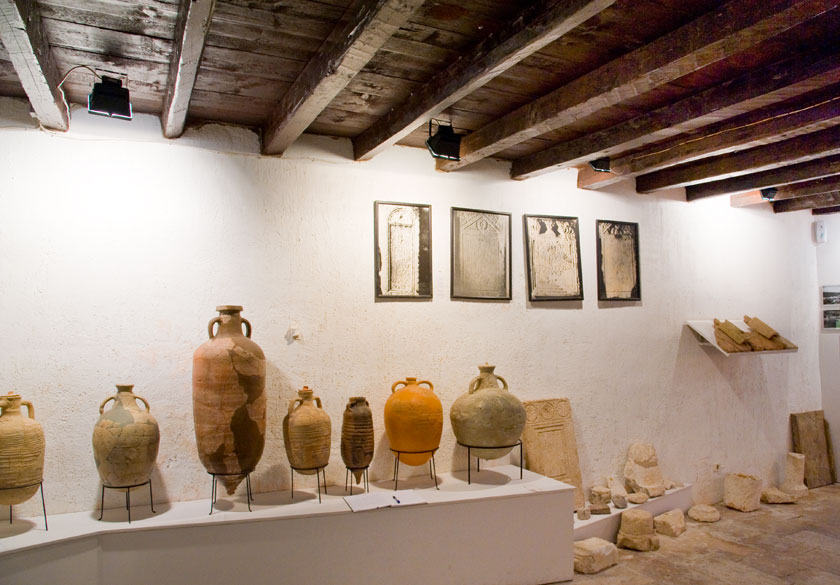Baška Voda
Baska Voda, a former fishing and farming village, is today one of the most famous places for a summer holiday on the Makarska Riviera has 2000 inhabitants. It embodies the Mediterranean lifestyle, having beautiful beaches and surrounded by Mount Biokovo (1762). Baska Voda is an ideal place for a summer holiday during the high tourist season whilst the slopes of Mount Biokovo, the olive groves and the vineyards are a pleasant place for both short and longer walks that strengthen and re-invigorate you.
Baska Voda, located on the western part of the Makarska Riviera, under the impressive Mount Biokovo whose highest peak, Sveti Jure, towers 1782m above sea level has, in its history, seen two developmental phases: the first, pre-historic, illyric and ancient phase of which the remains of a military fortress on the site known as Gradina (a small hill located on the place of the same name) evidence of which can be seen in the Villa Rusticas where Roman army officers retired and lived. Archaeological finds such as ancient Roman coins and home utensils, tools and agricultural equipment for the cultivation of land are preserved in the Baska Voda Homeland Museum, whilst the 17 ancient Roman grave-stones with their clear inscriptions are preserved in the Split History Museum. The ancient Roman settlement was once known as Aronija. The fall of Aronija is connected to the arrival of the Slavs (Croatians) in alliance with the Avars. Spreading through the Neretva valley and on the western part of the Adriatic coast, they destroyed and burnt all settlements from Narona (Neretva Valley) to Salona (Solin/Split) which they conquered in 614 together with Aronija. In the face of a tide of destruction, the surviving inhabitants of Aronija, retired officers with their servants and slaves most probably escaped and looked for protection within the well fortified walls of the Diocletian Palace in Split and the Roman Illyrians probably hid in the concealed areas behind and at the base of Mount Biokovo. The site of the ancient Aronija, destroyed at the beginning of 6th century, was empty until the beginning of 17th century!
At the beginning of 17th century, inhabitants of Bast village, located under Mount Biokovo, 3km from the present Baska Voda, built the first houses in the area that today is known as Obor and slowly inhabited Baska Voda. Then, over the centuries, they inhabited the area surrounding the natural source of fresh water in the district known as Srida and Pogradina (Podgradina) and that is where the name of Baska Voda originates – Basta (Bascanska Voda – Basta’s Water).
The first inhabitants of Baska Voda were farmers (olive growers and grape cultivators) and fishermen. With the construction of the first steam boats, some of them became sailors even on transoceanic ships where voyages could last up to two or more years. Just before the First World War began, Franz Joseph, the Austrian emperor built the main wharf for boats (Veliki mul 1912) in Baska Voda, alongside other ports and harbours along the Adriatic coast, which stimulated the local inhabitants to build “Stella” sailing boats with a load capacity of up to 100,000 kg. These were used to transport cattle, cereals and other goods in trade between the islands of Brac, Hvar and Vis and the Biokovo hinterland reaching Duvno (Tomislavgrad) and Livno in Bosnia. With the appearance of phylloxera (a grapevine disease) and the collapse of viticulture in Italy, wine was transported as far as Trieste. When Yugoslavia fell and during the war crisis, instead of tourists, Baska Voda was inhabited by refugees from the Croatian war areas as well as from Bosnia and Herzegovina which sometimes outnumbered the local inhabitants by three to one during the major crisis.
With the establishment of a new government in the Republic of Croatia, already by 1993 the first efforts to organise the tourist offer were carried out, so that with the initiative of the author of this text and under the sponsorship of the former Municipality of Makarska, one of the first tourist boards in Croatia – the Baska Voda Tourist Board was founded in 1993, which, in 1994 appeared on both the national and world market with new and quality materials (Historic Monograph, Image Monograph and a Sale catalogue of the Baska Voda tourist offer with several hotels and 126 holiday houses being presented). With the foundation of the Baska Voda Municipality and the reformation of the local tourist board, being turned into a municipality tourist board, this practice continued successfully.
During your holiday in Baska Voda do not miss a visit to the neo-romantic Church of St. Nicholas, which dates back to 1899 in which, during the tourist season, music concerts are often organized, or the Baroque St. Laurence Chapel from 1750, the Homeland Museum and the Mollusk Museum, walk through the old part of Baska Voda where the original popular architecture is still well preserved or along the beautiful promenade by the sea - have a drink in one of the numerous coffee bars and, of course, if you are not staying in our hotel, have dinner at our BACCHO restaurant where you can enjoy Mediterranean specialties in peace on our beautiful Mediterranean terrace.

















